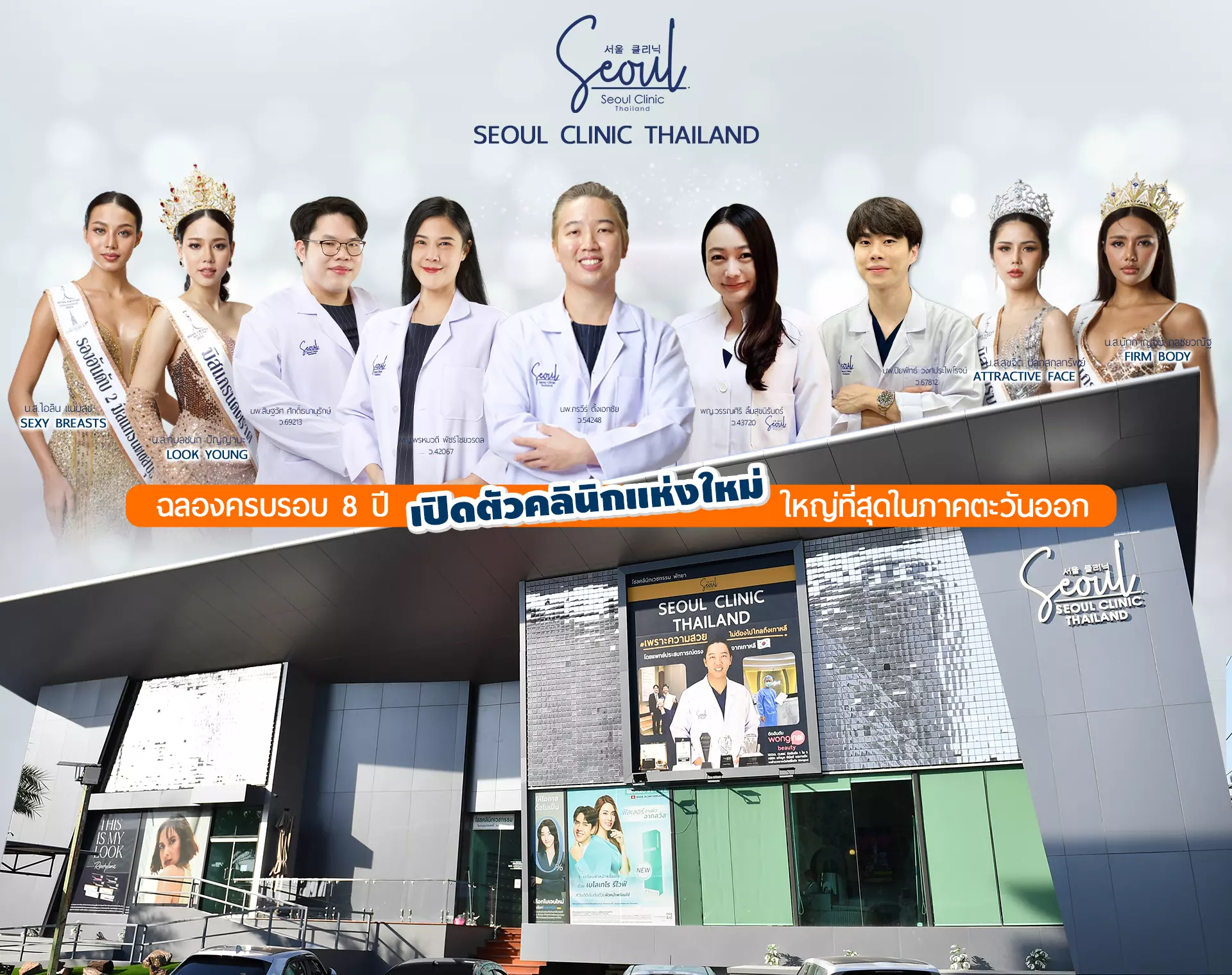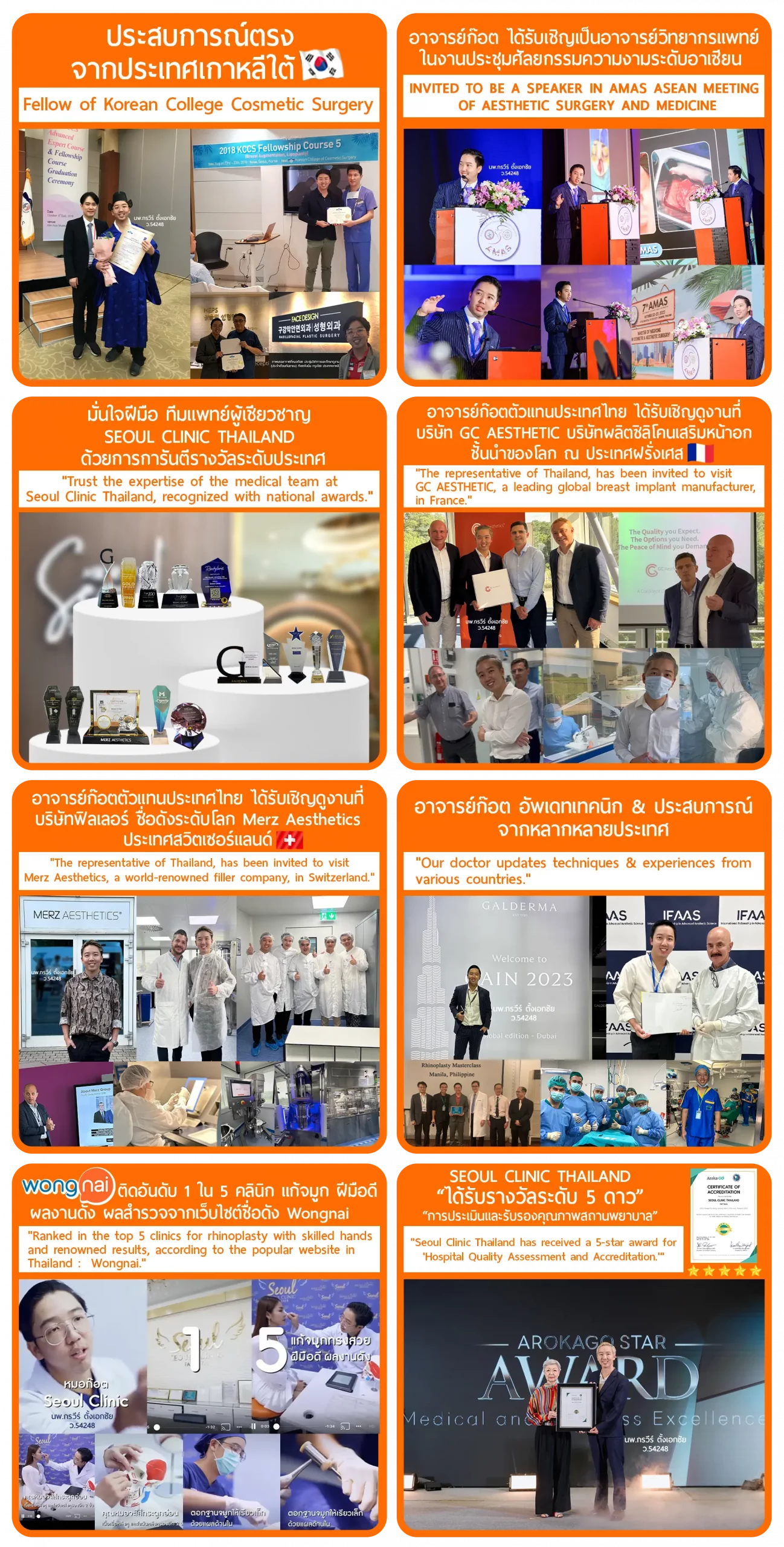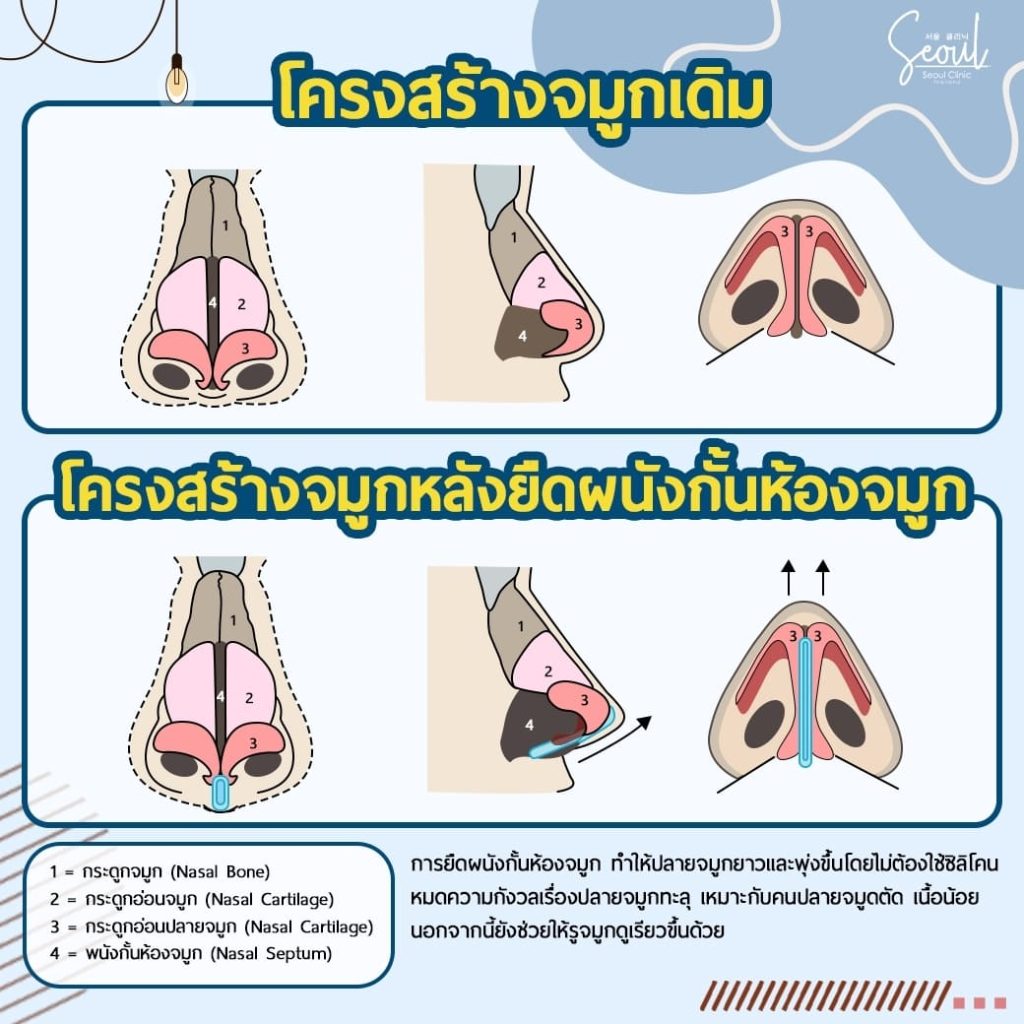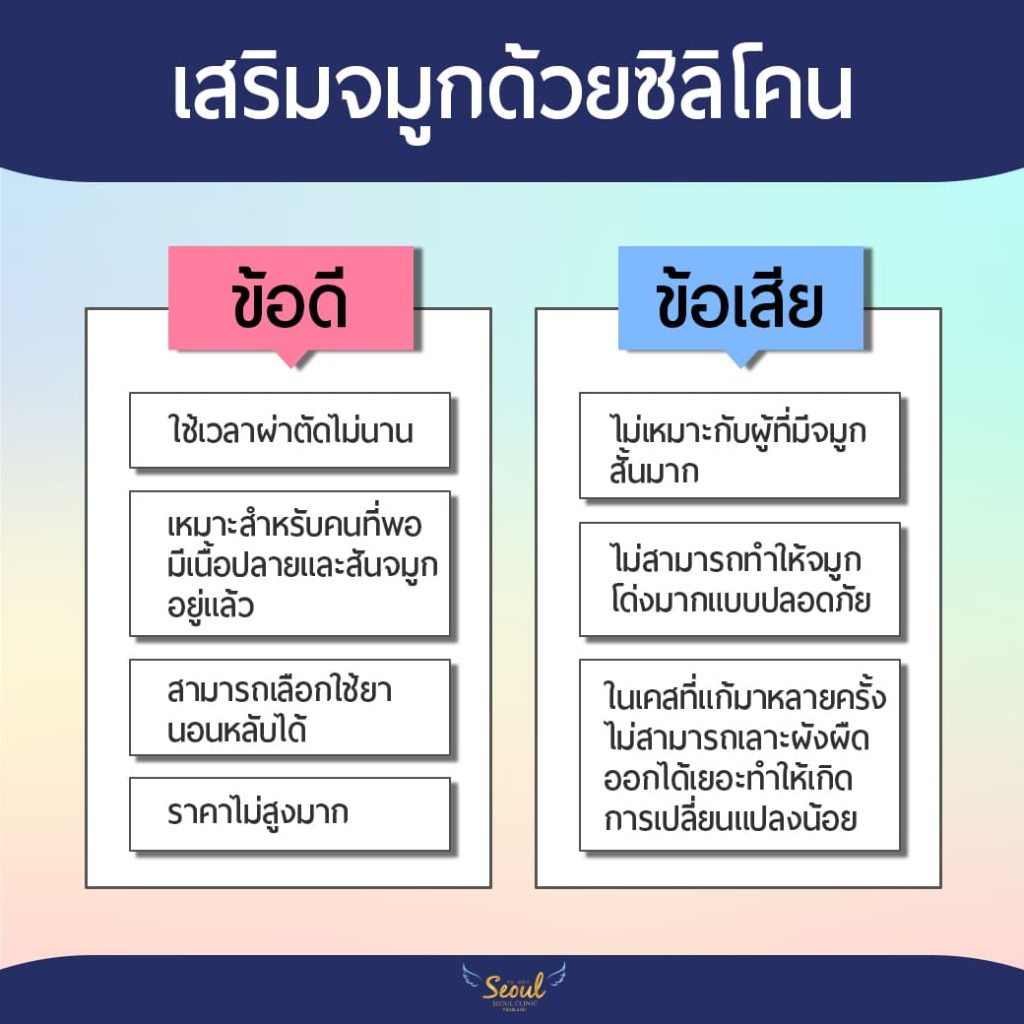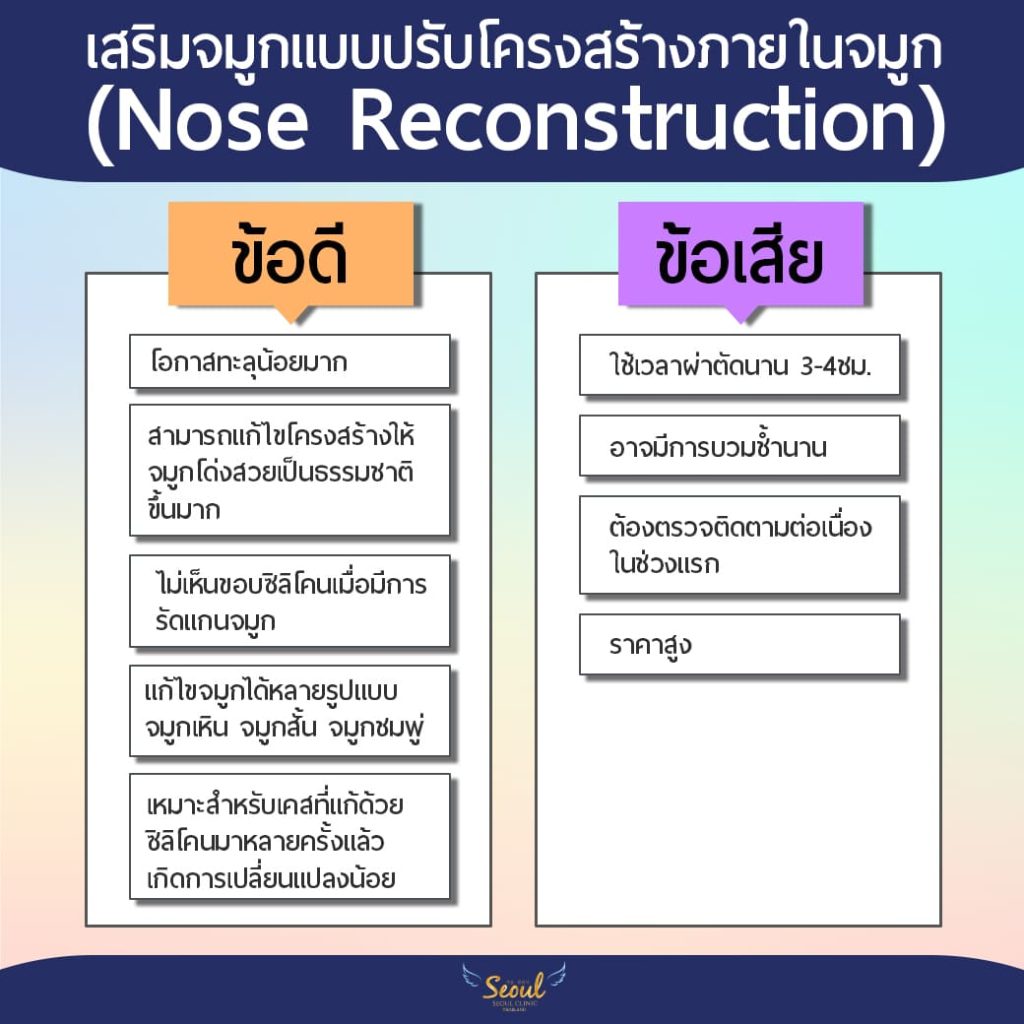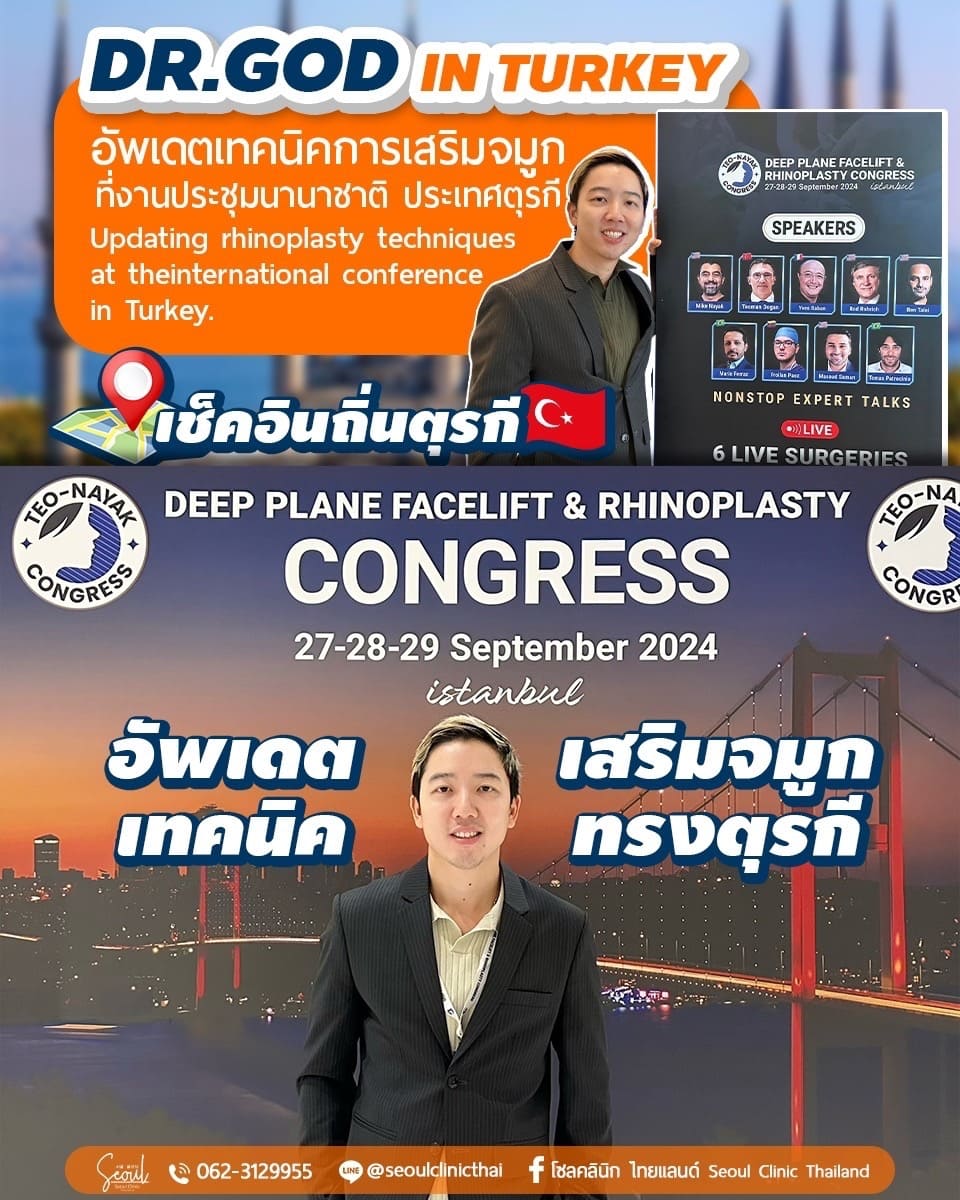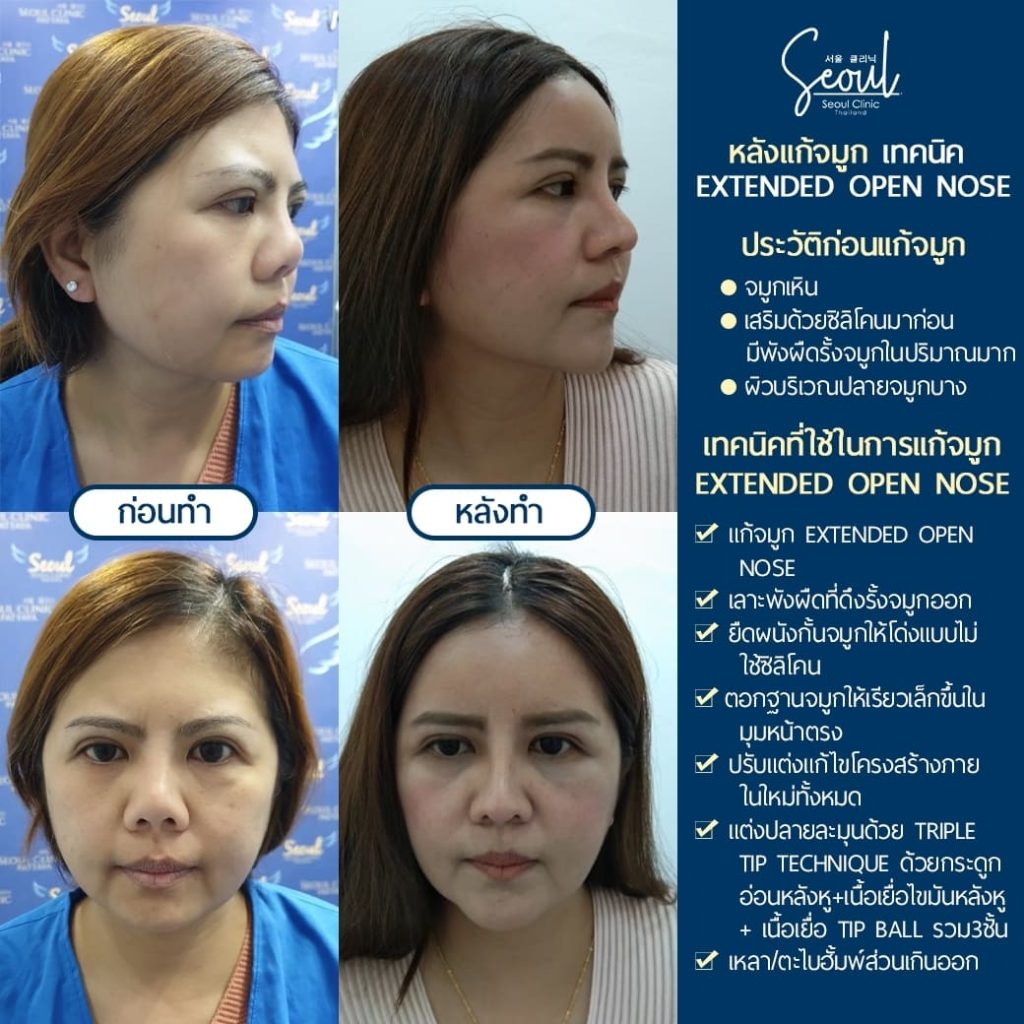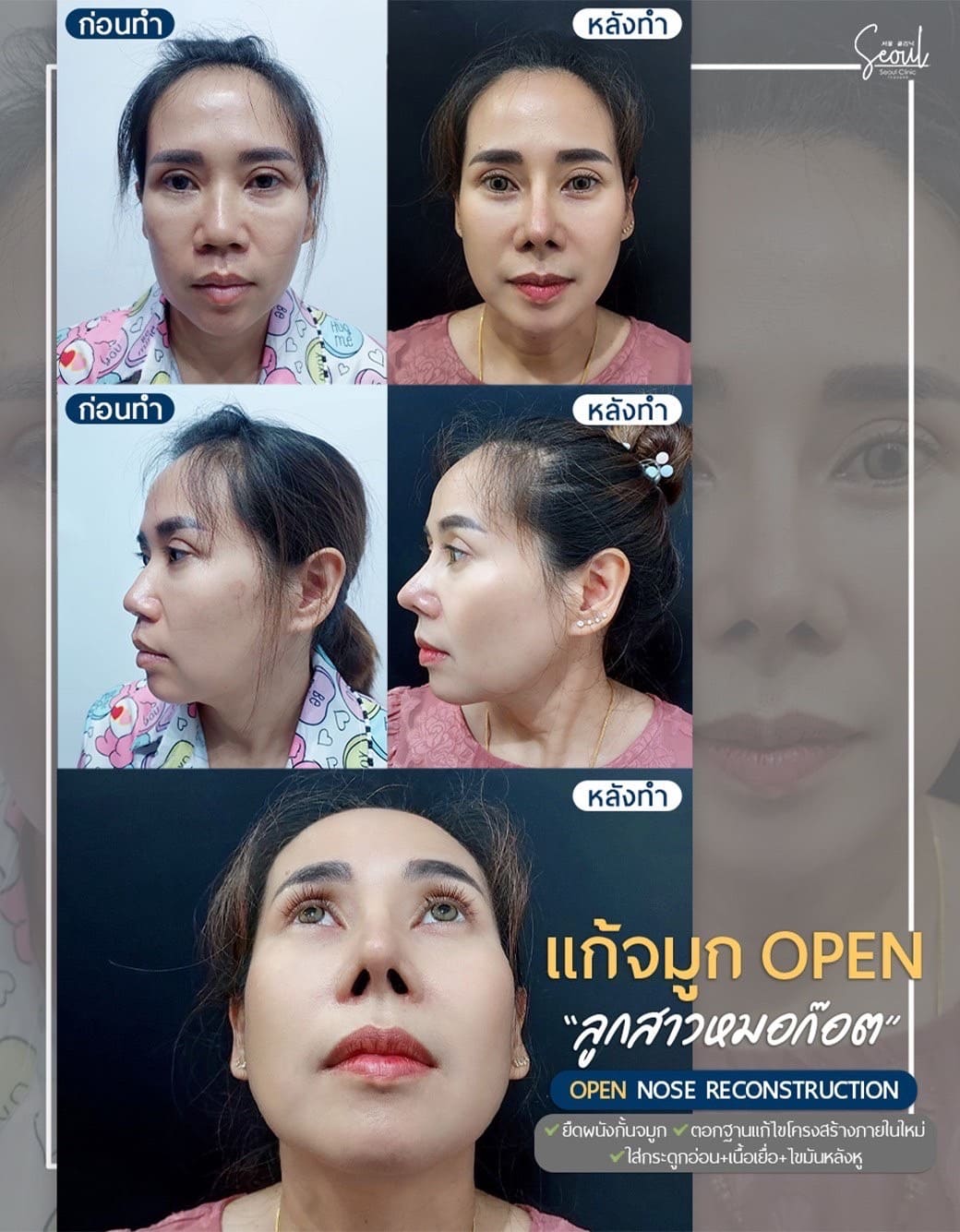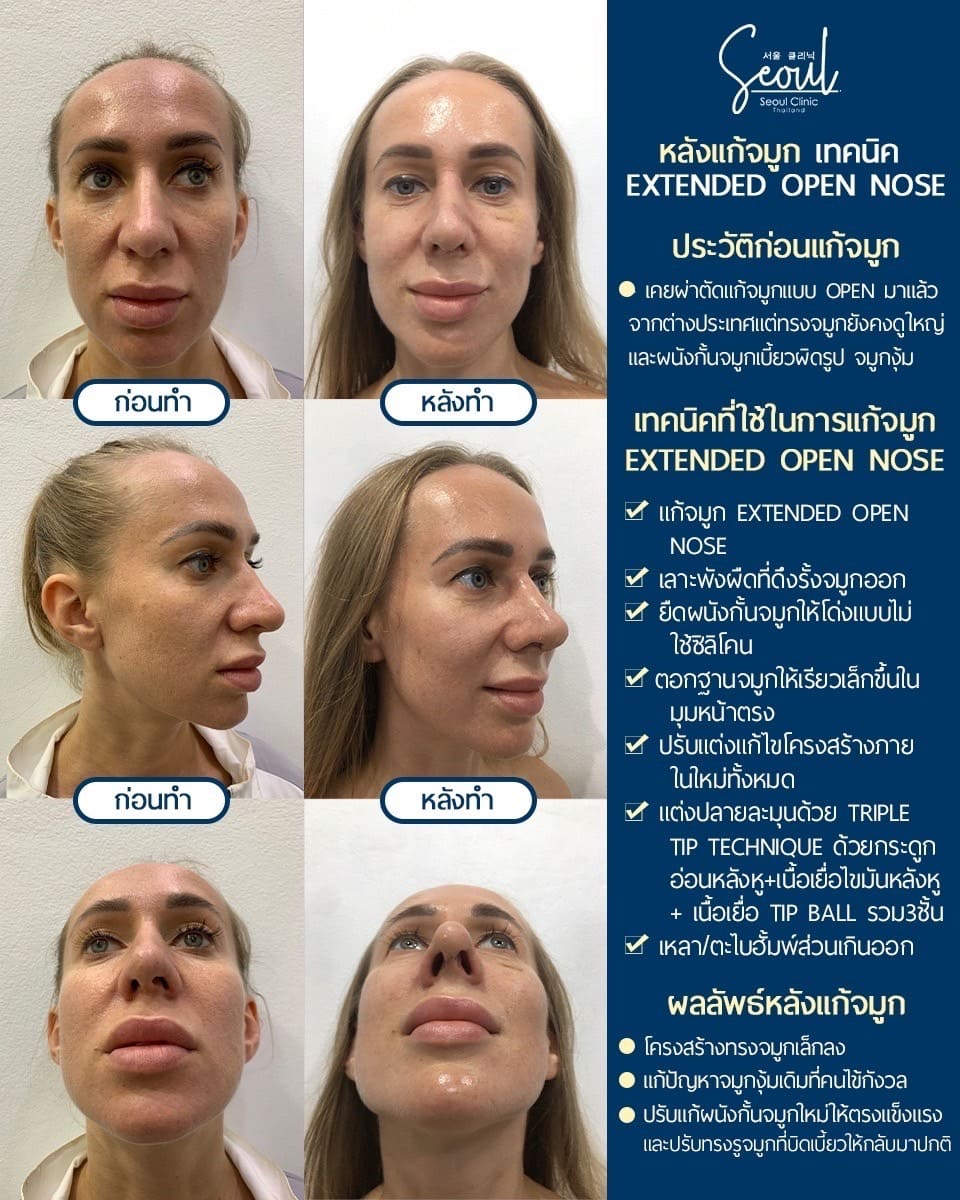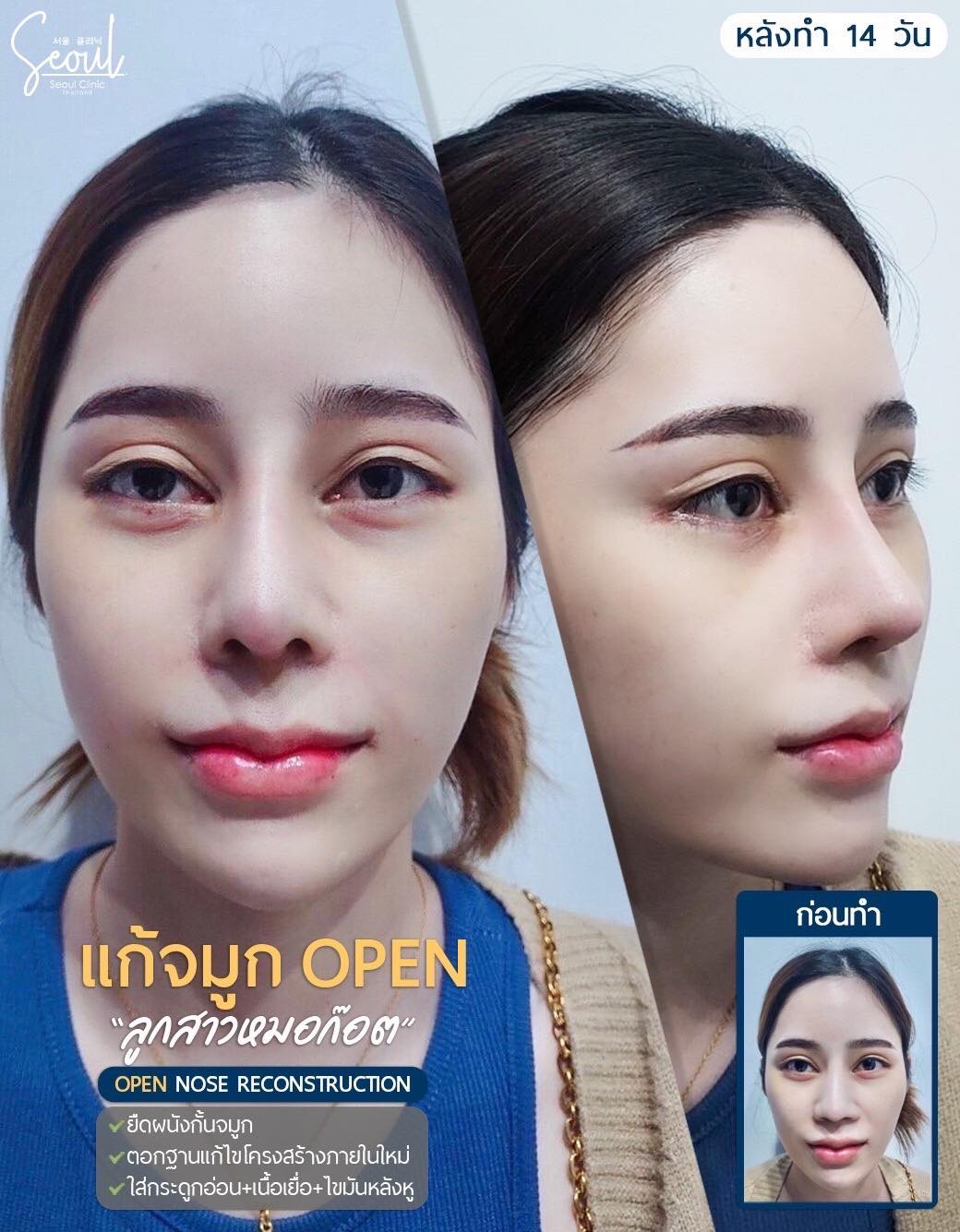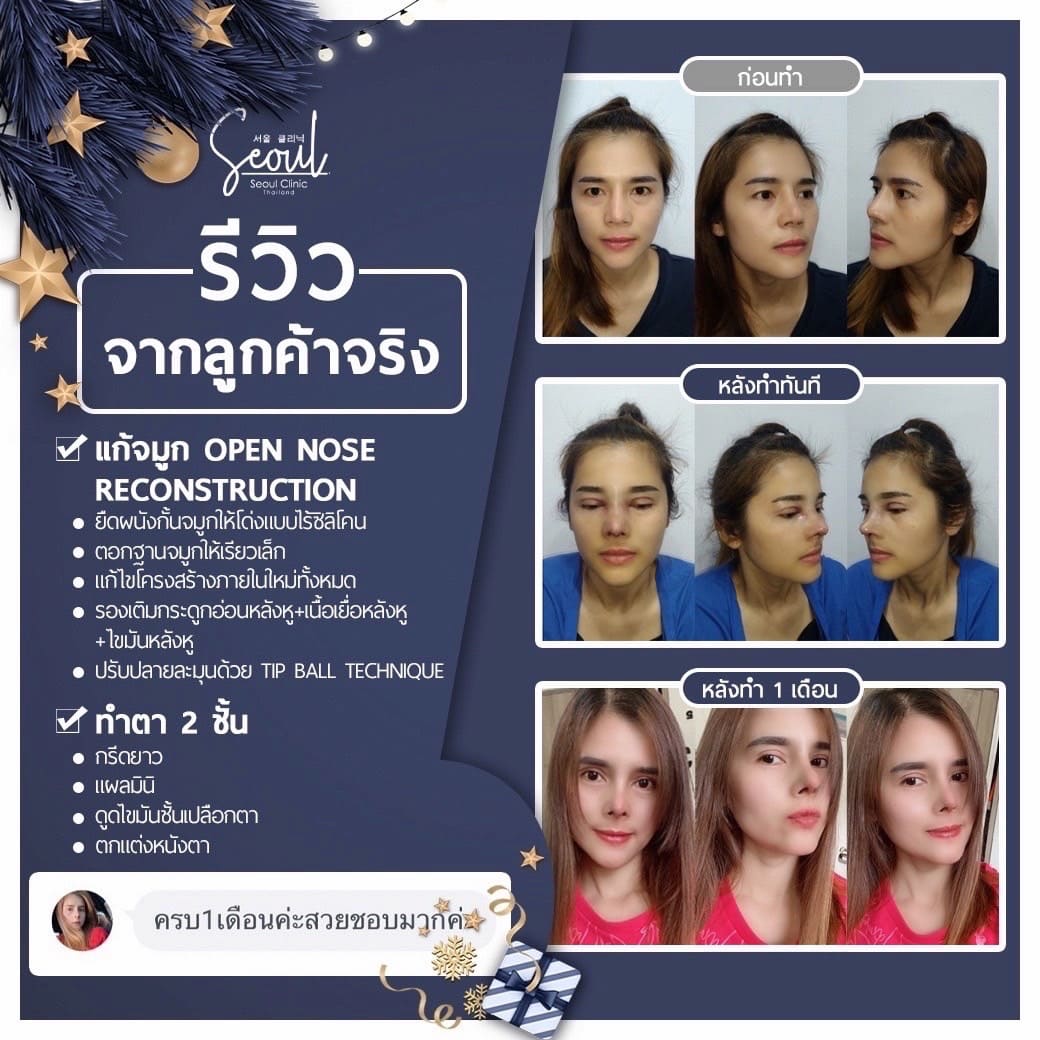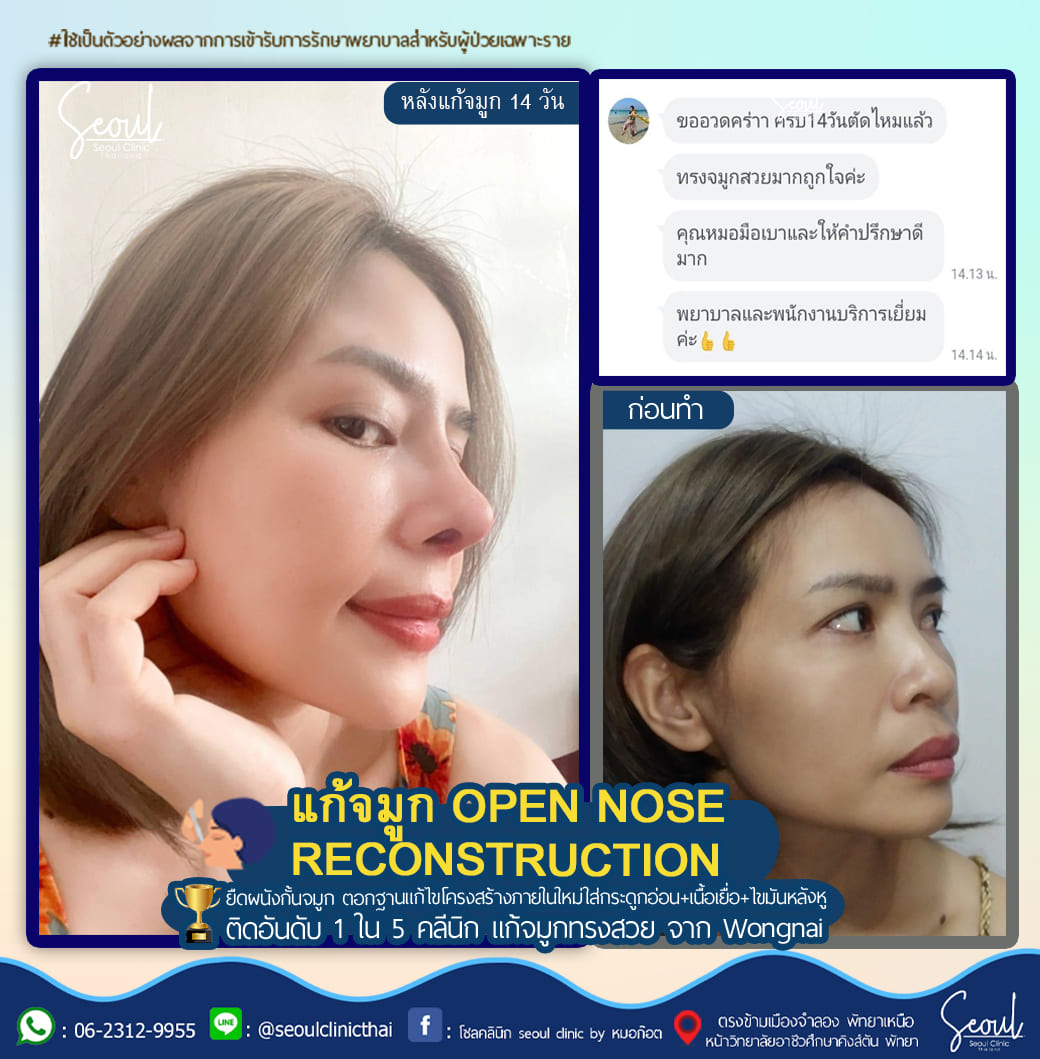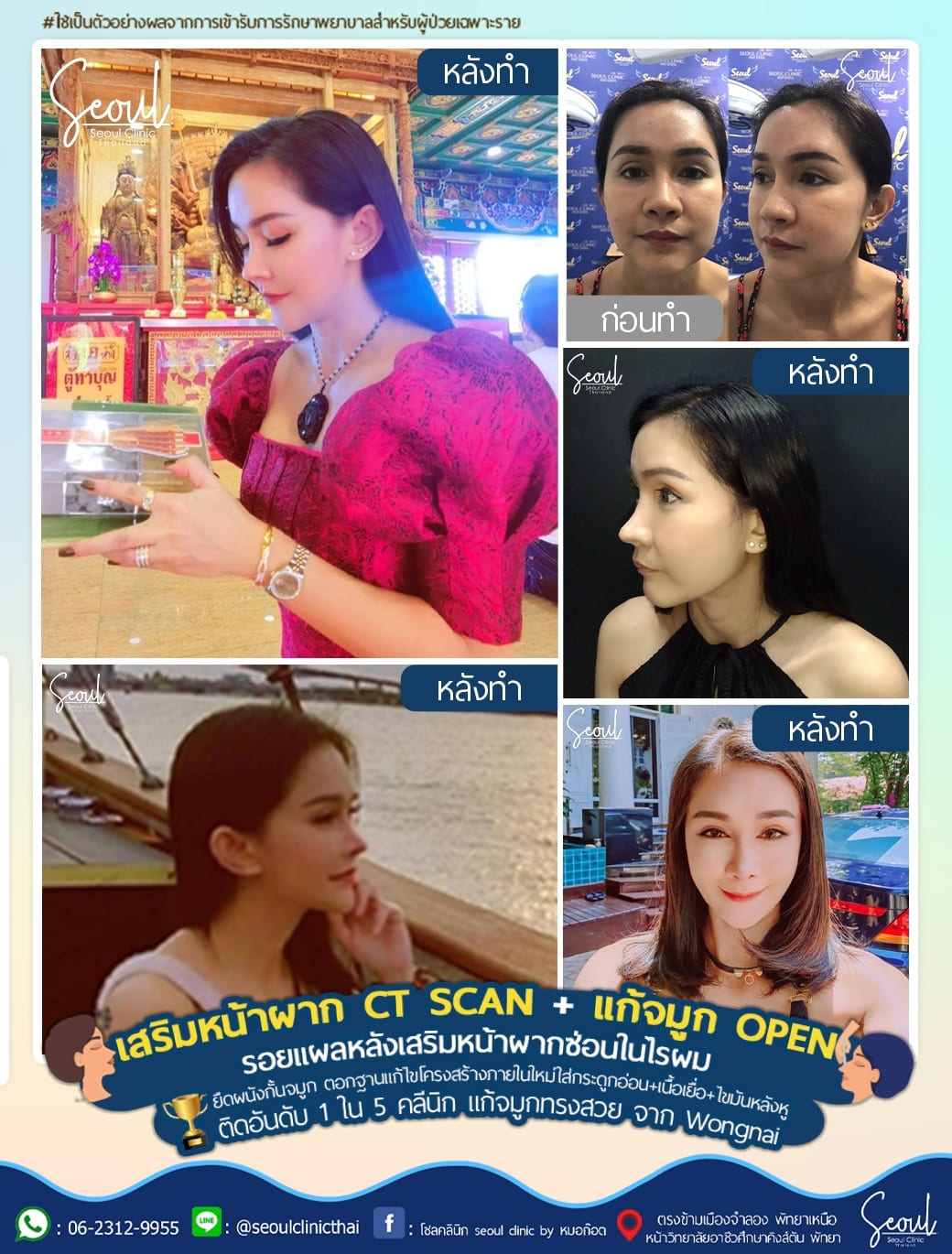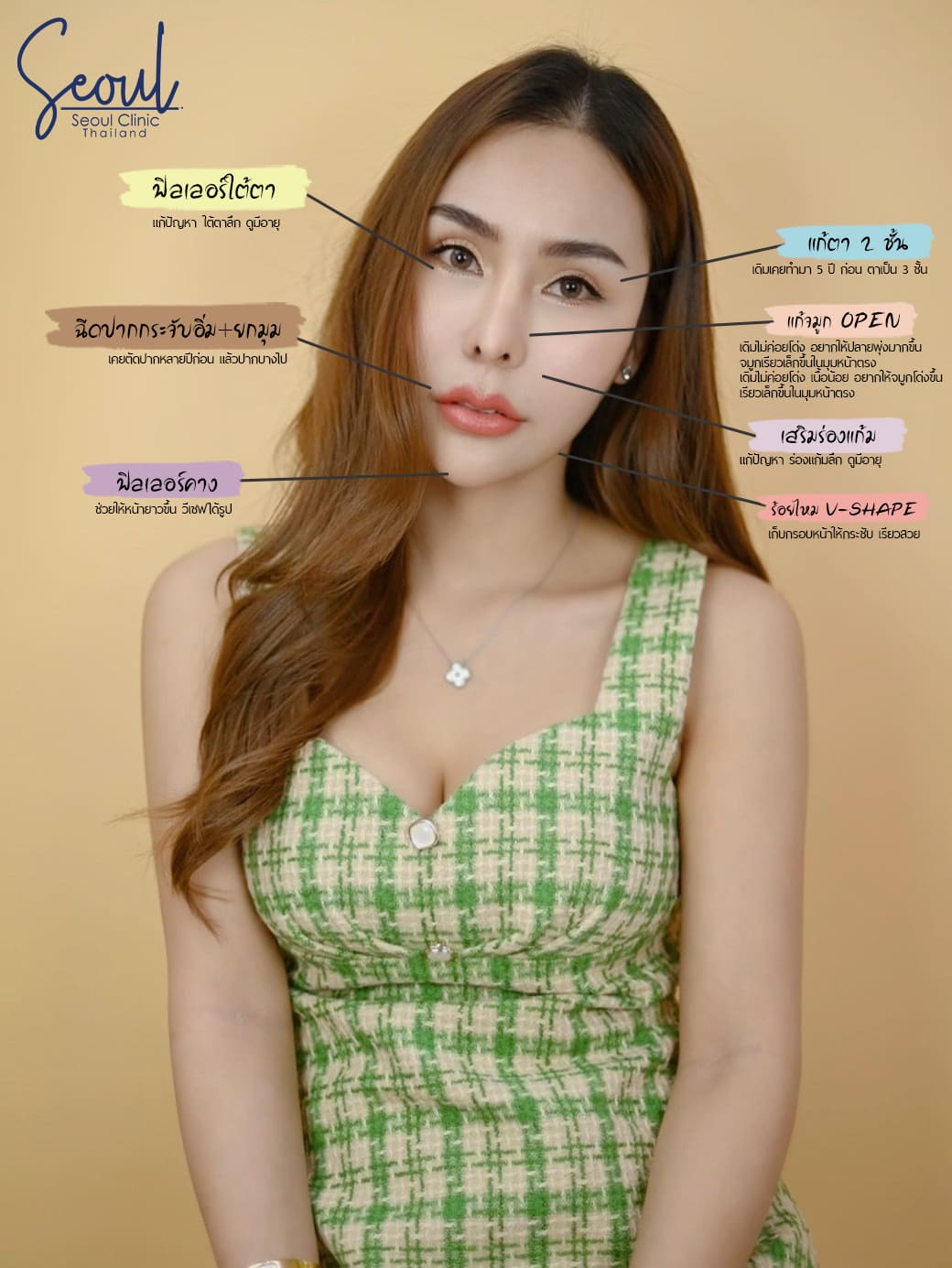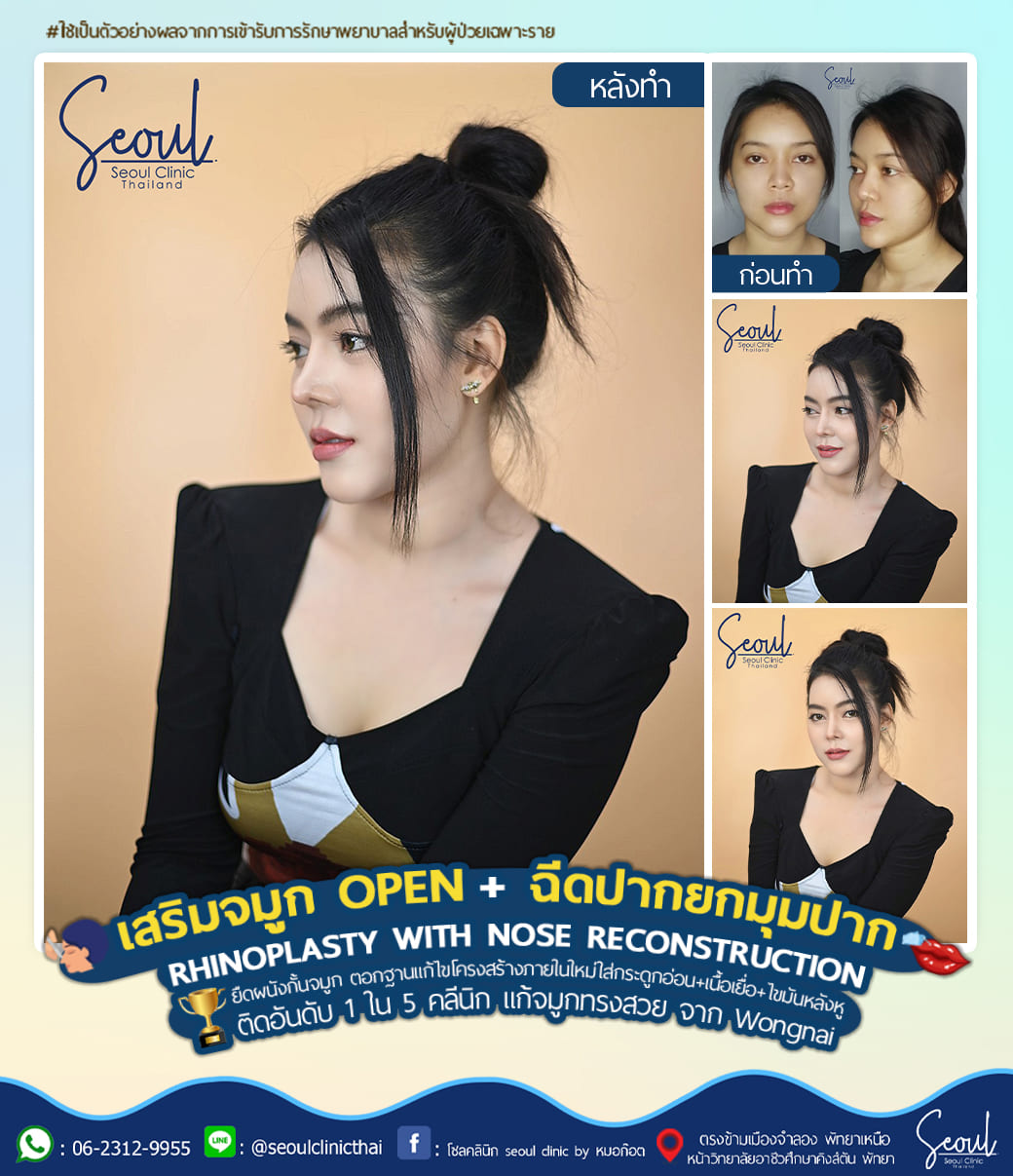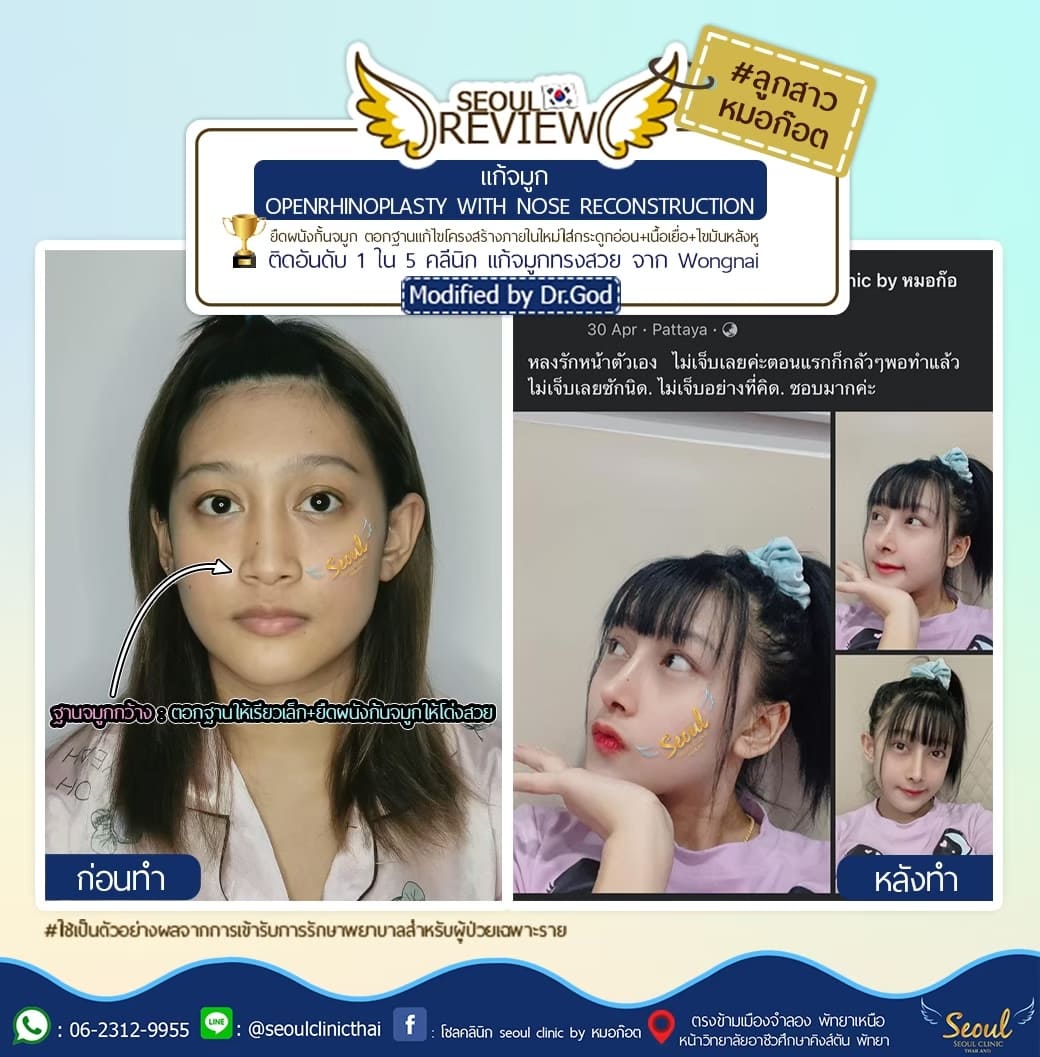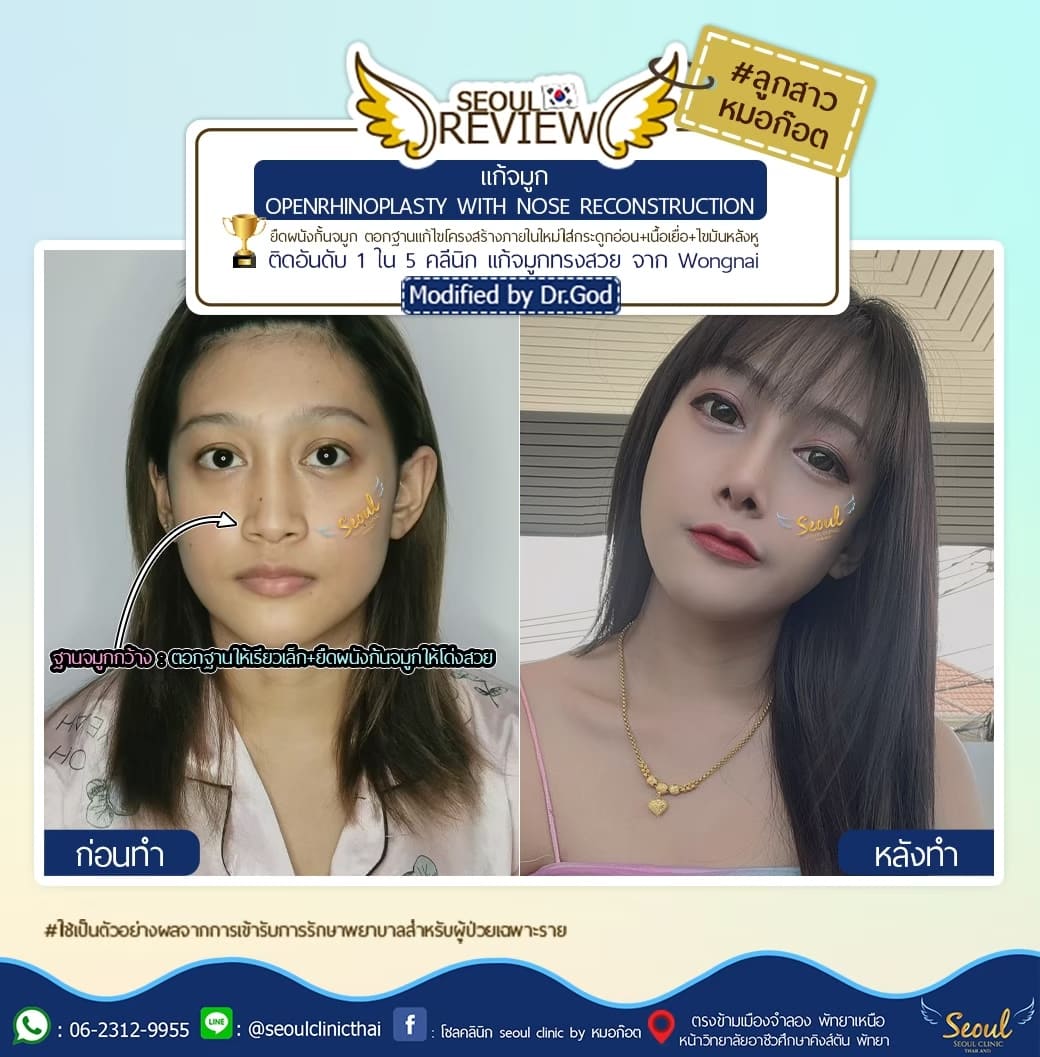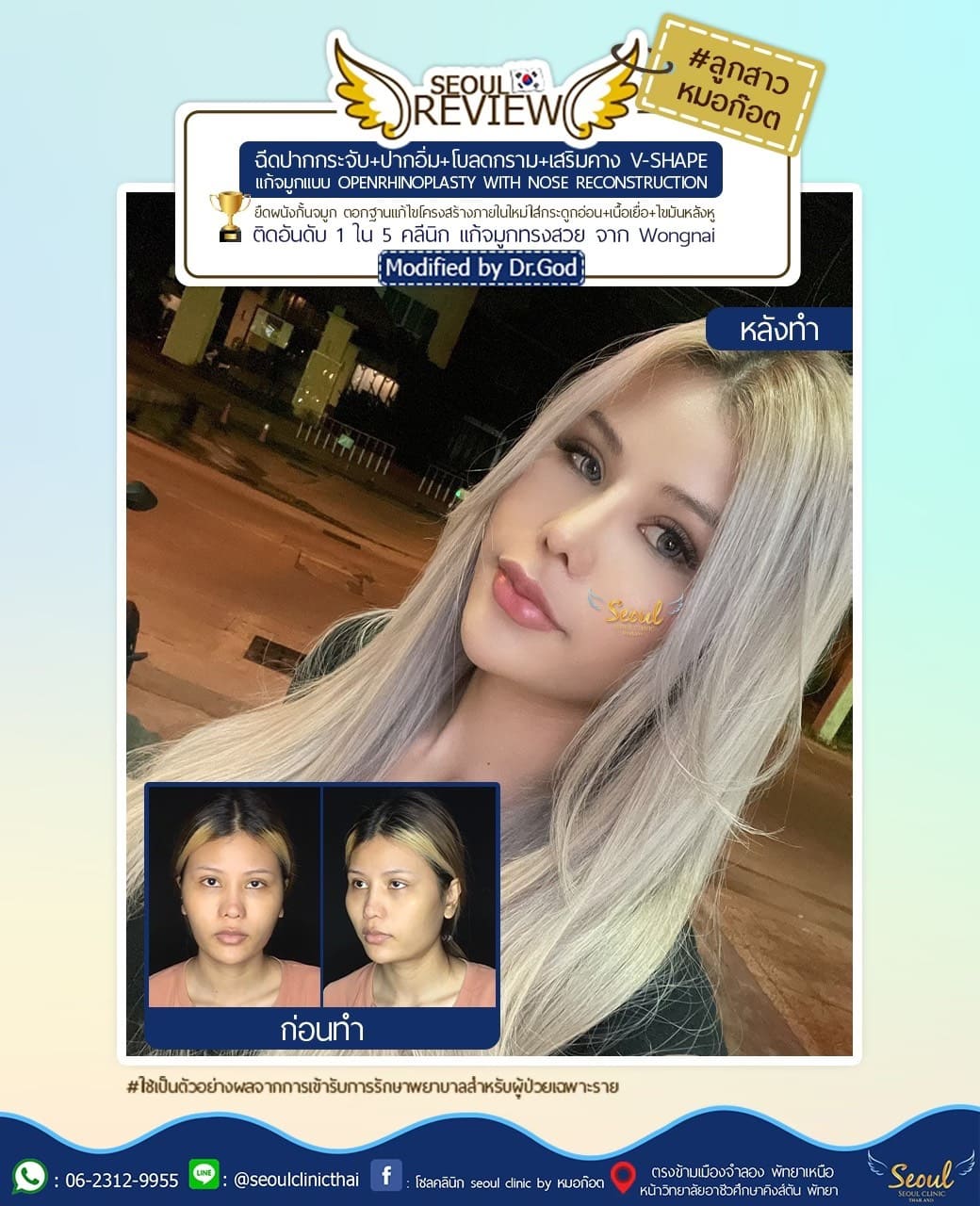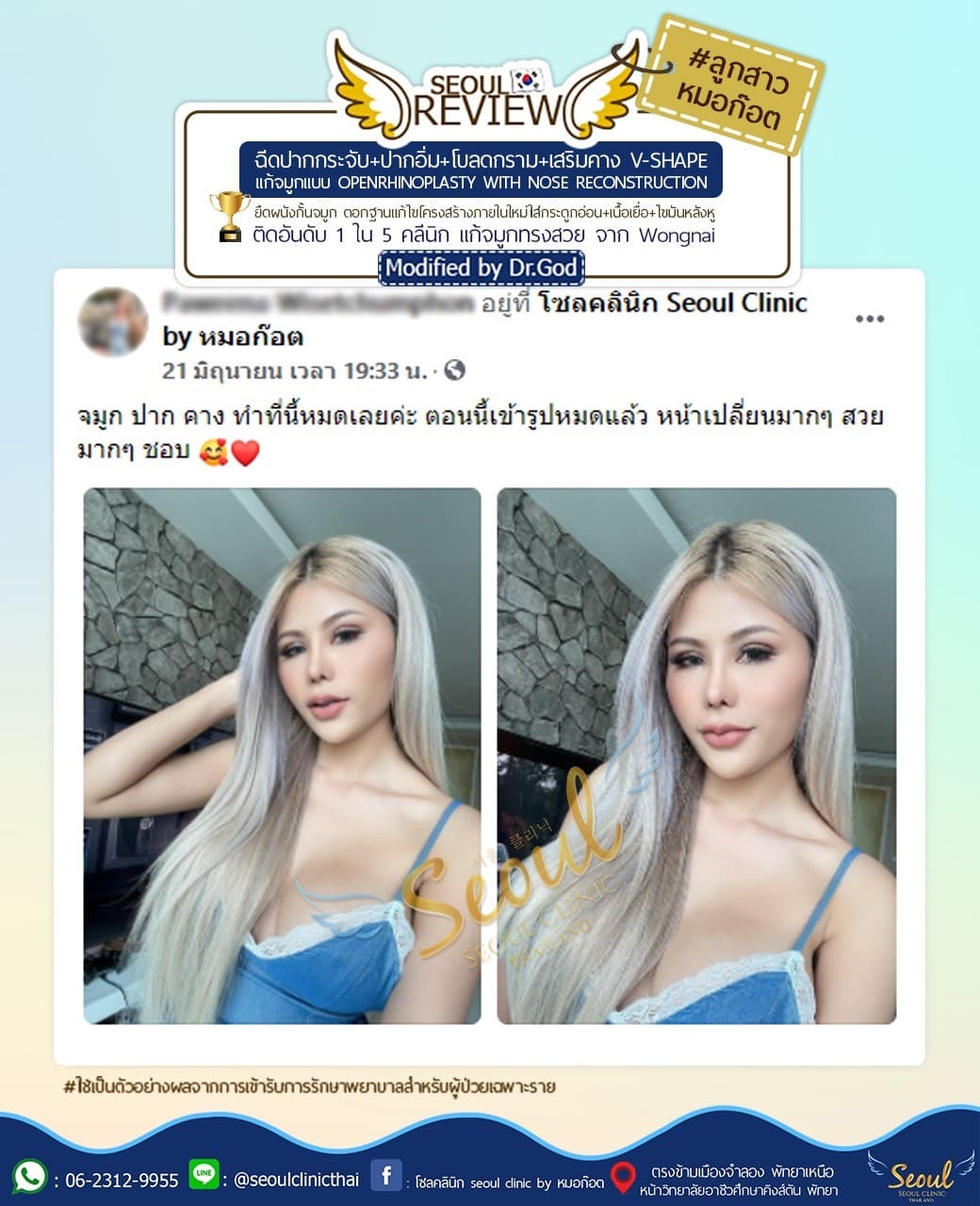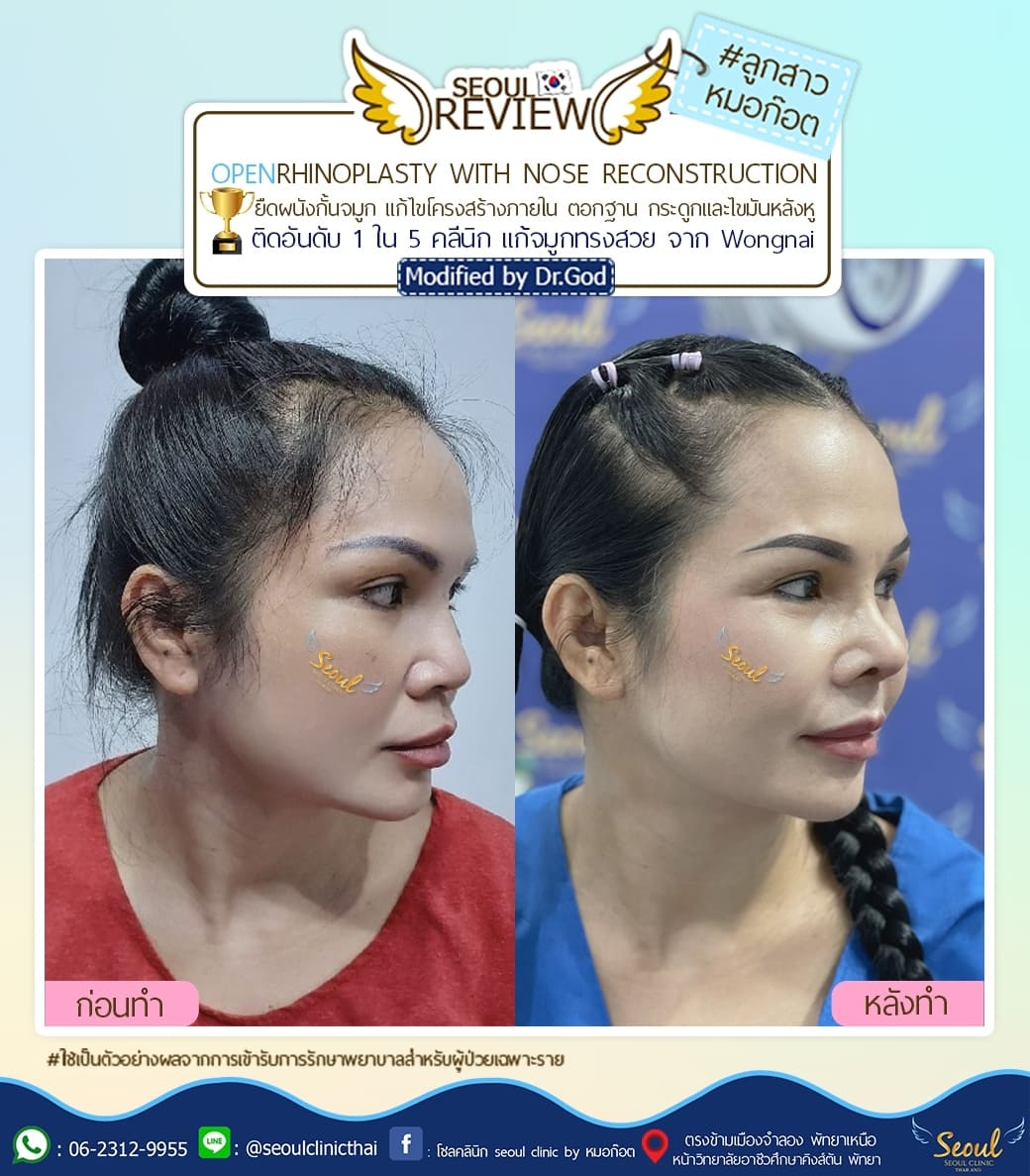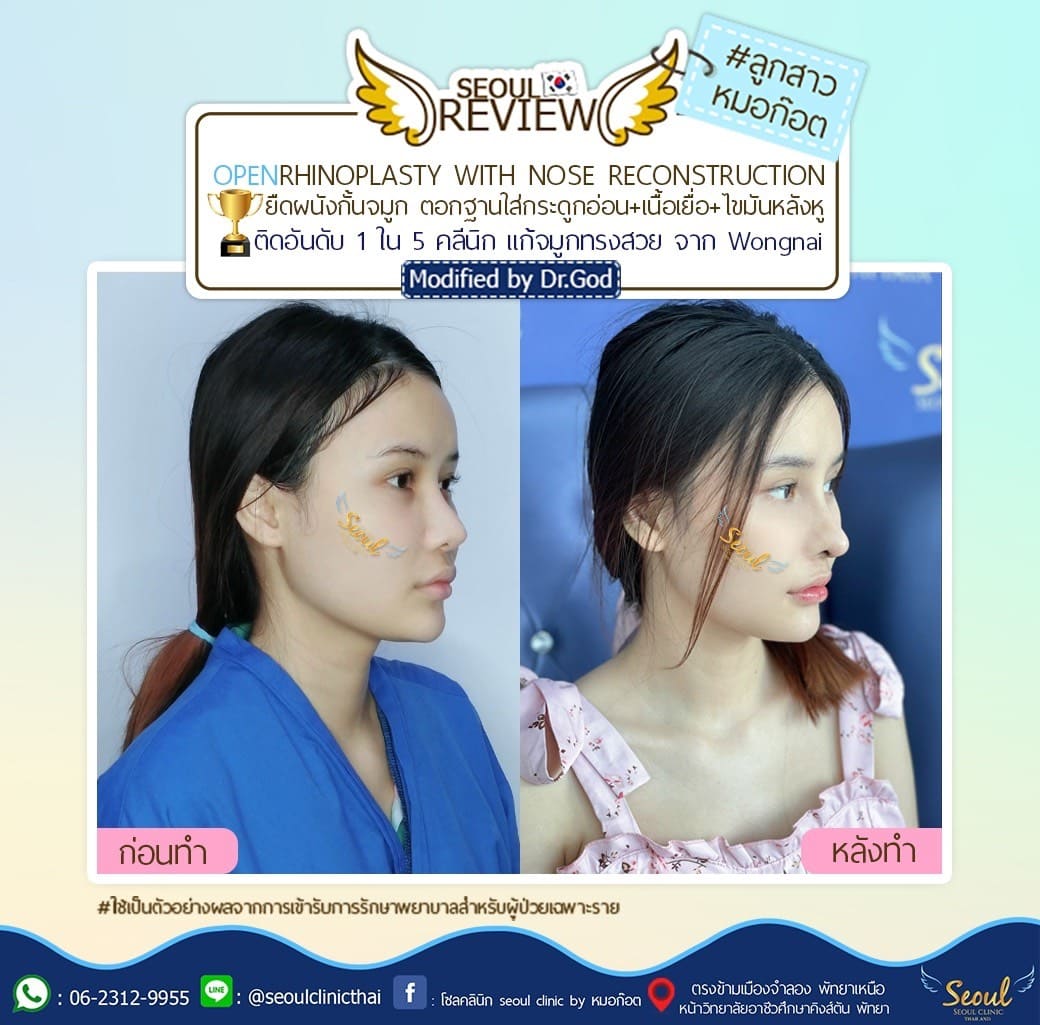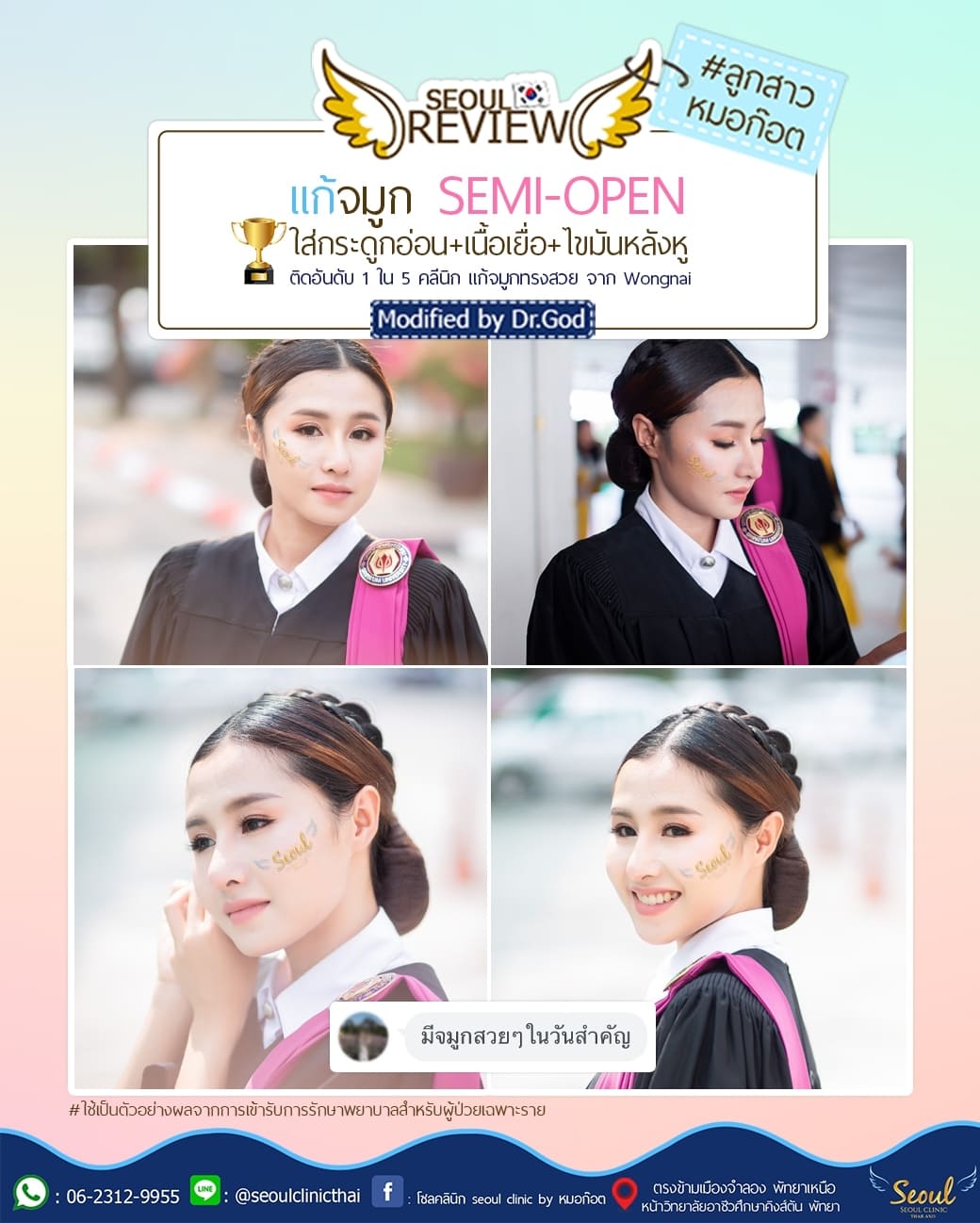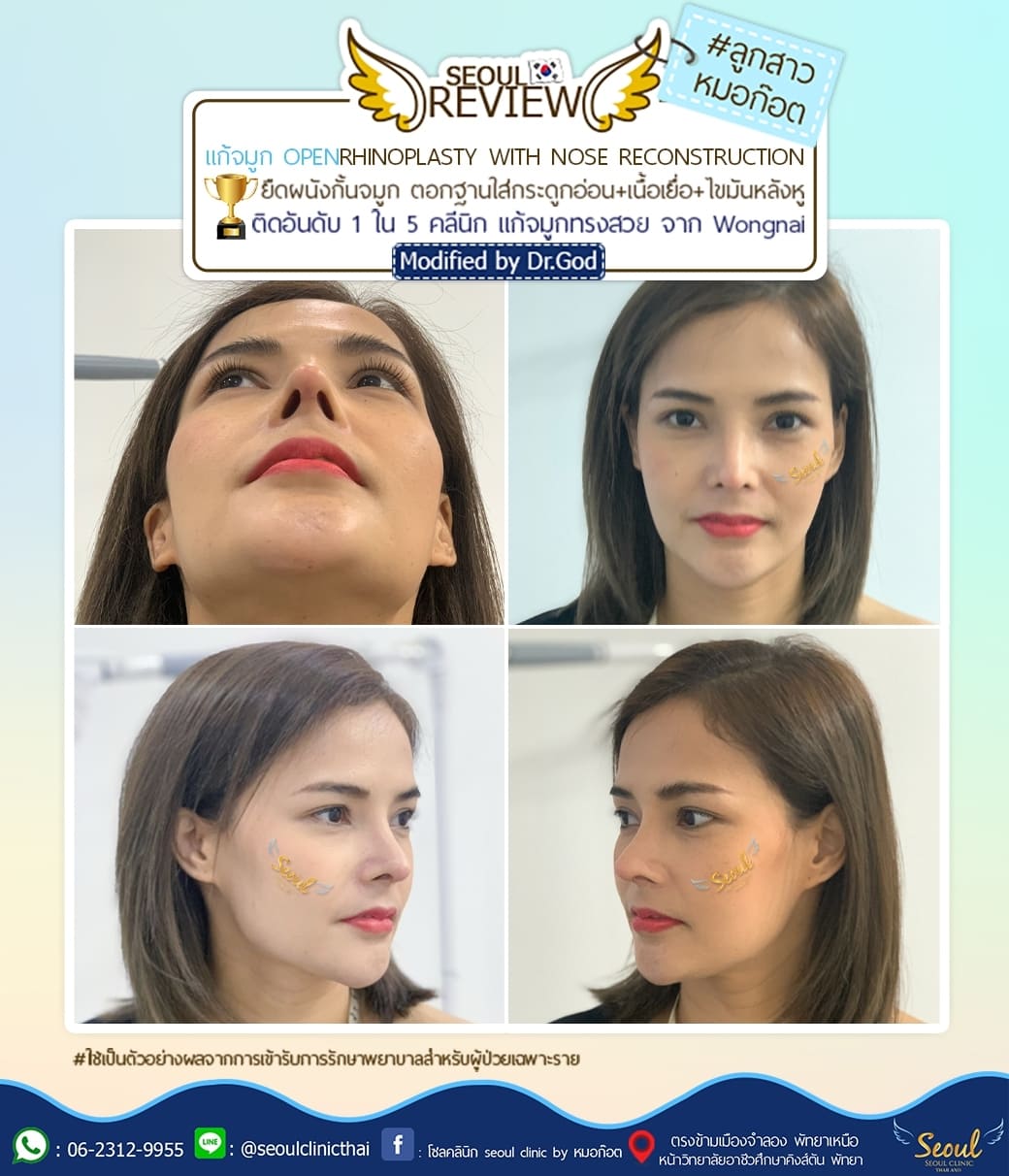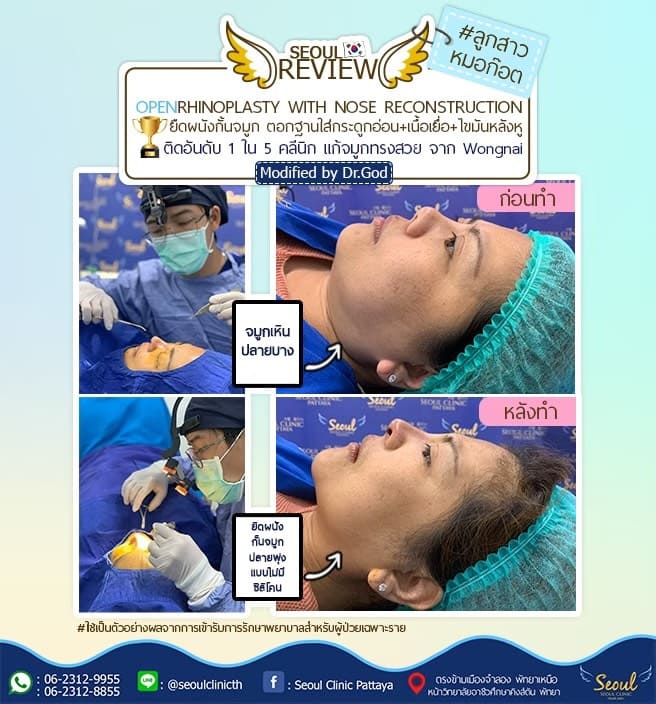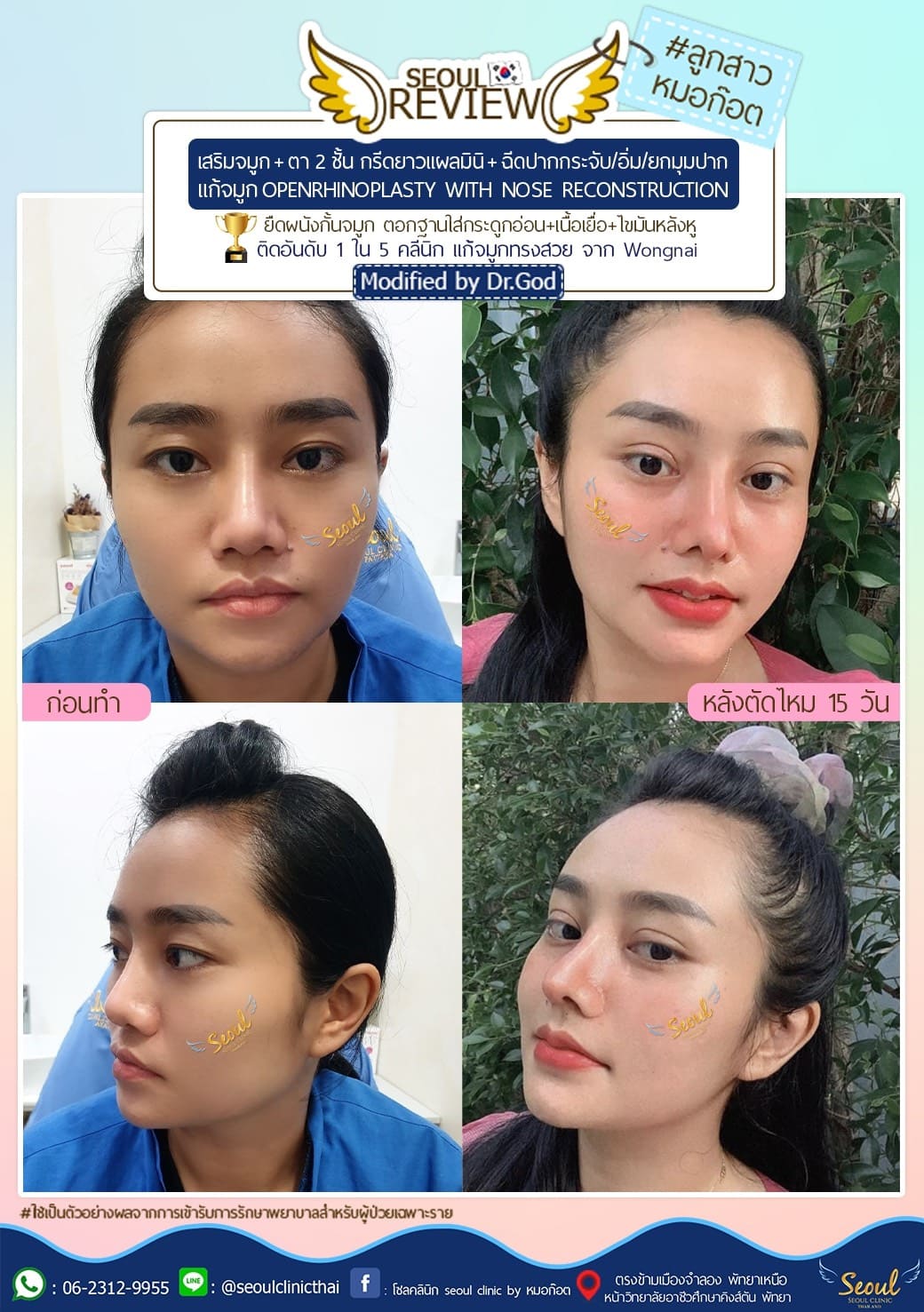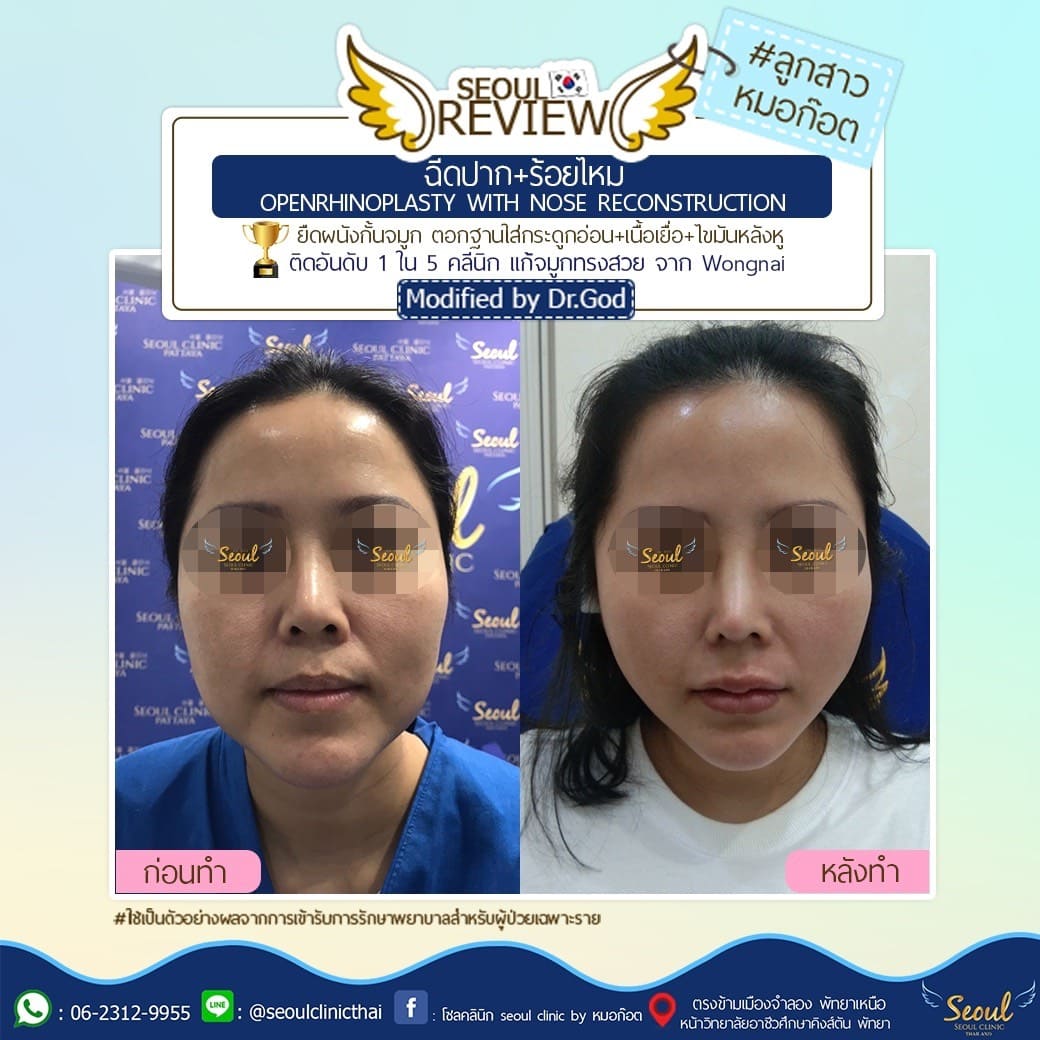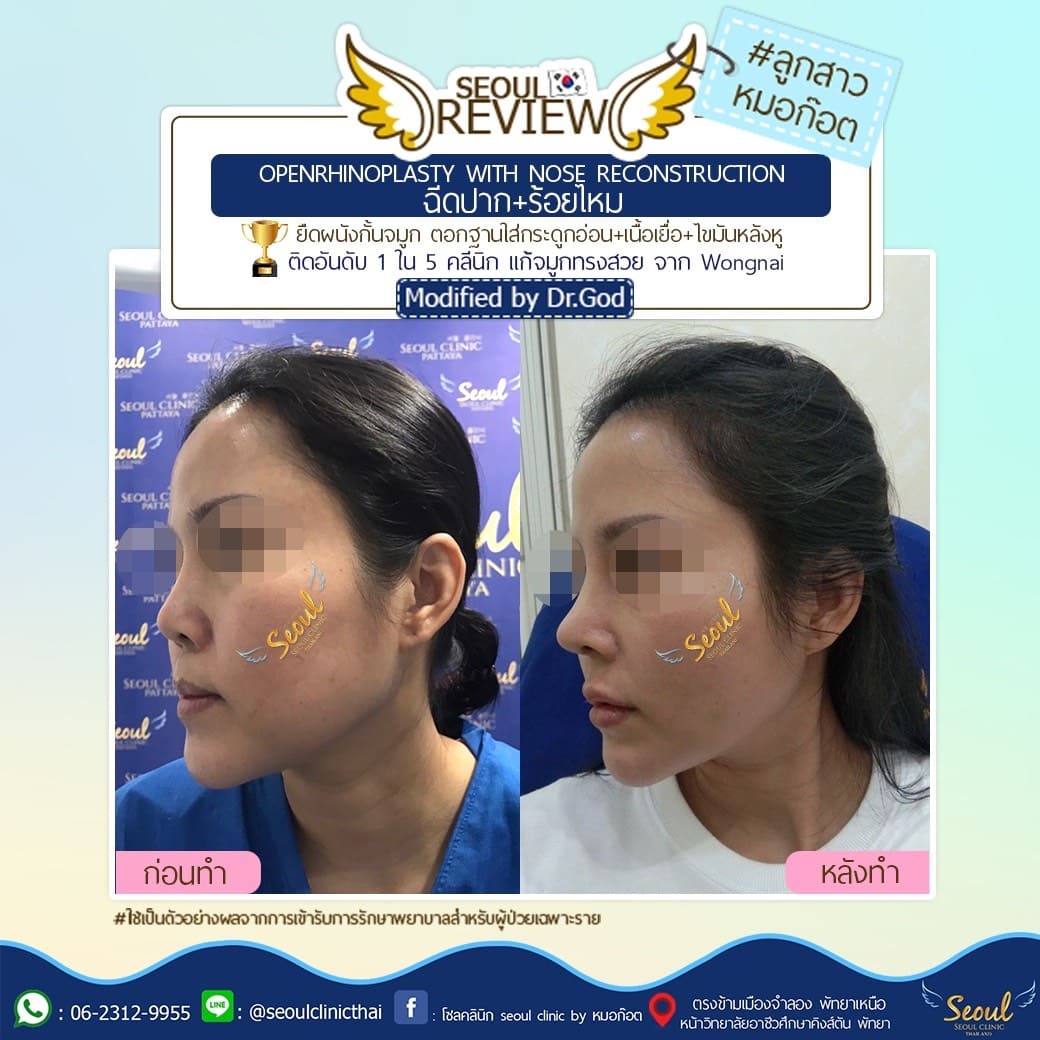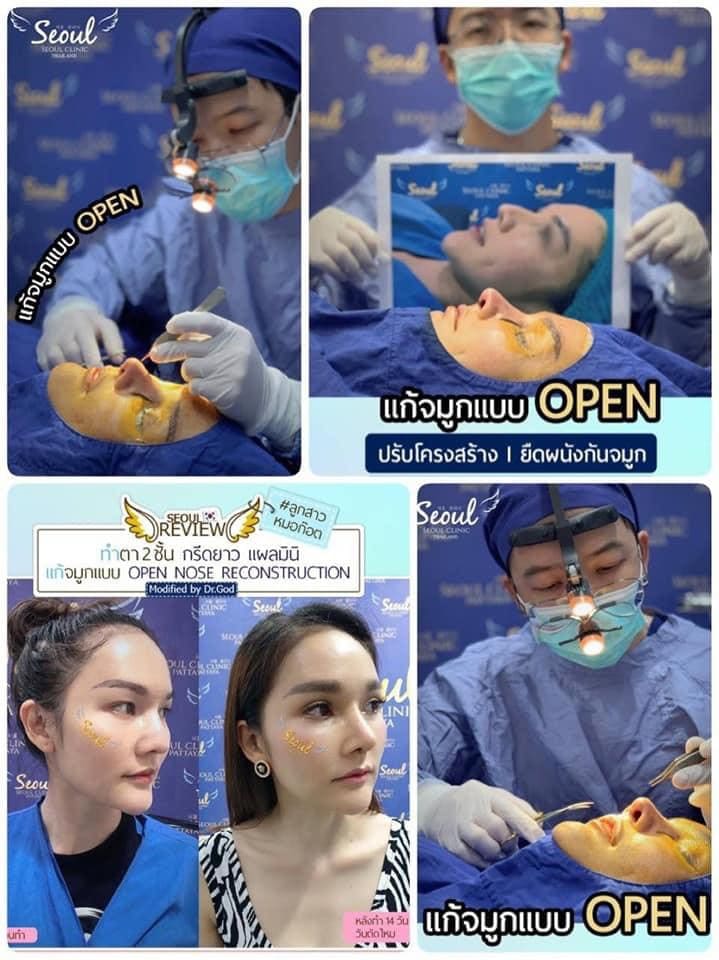
How many types of nose augmentation are there? Which one is best for us to do?
First, we will discuss the 3 methods of nose augmentation at SEOUL CLINIC THAILAND.
In the three methods of nose augmentation,
- The most popular methods of rhinoplasty today are closed rhinoplasty and semi-open rhinoplasty, which are methods of rhinoplasty that still use silicone rods to enhance both the bridge of the nose and the tip of the nose. The technique for opening the wound is slightly different for each method.
Closed Rhinoplasty and Semi-Open Rhinoplasty
It is the most popular rhinoplasty technique today. Silicone rods are used to enhance the bridge and tip of the nose. Artificial tissue or cartilage and fat behind the ear are added to the tip of the nose, which prevents the silicone from directly touching the nasal tissue. In addition to helping the tip to point up, it also helps prevent penetration. At SEOUL CLINIC THAILAND, we use a tip support to increase softness with the TRIPLE TIP technique, which is to support the tip of the nose in 3 layers: cartilage behind the ear, fat tissue behind the ear, and special TIP BALL tissue to increase prominence and softness in the long term.
However, sometimes, closed rhinoplasty and semi-open rhinoplasty cannot solve many types of nose problems because they only insert silicone without modifying the internal structure or stretching the nasal septum. Therefore, the shape of the nose depends mainly on the shape of the silicone. Other factors such as skin layer, original nasal base, sufficient and flexible nasal tissue are very important for inserting silicone into our nose without perforation and to see satisfactory results. In cases where our nose has limitations or is not suitable or deformed, such as the original nose with very little tissue and wants a high, pointed nose, a high nose, a large nose, a lion's nose, or a nose that has been renovated many times until a lot of scar tissue has formed, which is an obstacle to revising the nose to make a clear change. Sometimes we often hear many people say, "I have had my nose renovated many times at other places, but it has hardly changed." This is because the scar tissue that has formed is what holds the shape of the nose back. OPEN rhinoplasty therefore plays an important role in this.

OPEN NOSE RHINOPLASTY
It is an advanced technique to correct structural problems of the original nose that cannot be corrected by closed rhinoplasty and semi-open rhinoplasty because the internal structure is not corrected.
Open nose rhinoplasty involves more advanced steps and techniques than general silicone rhinoplasty, including:
- Extending the nasal septum to create a high, pointed nose without using silicone
- Both sides of the nose bridge are pierced to make the nose look slimmer when viewed from the front.
- Re-structuring the internal structure and rearranging the cartilage that may have become deformed after multiple conventional rhinoplasty surgeries.
- Softening the nasal tip with ear cartilage, ear fatty tissue and special tissue TIP BALL
This internal nasal structure correction is very important in enhancing the nose to be beautiful, sharp, and slender under the limitations of the nasal structure that is different for each person.
When should we have an OPEN NOSE RECONSTRUCTION?
- The nose has a large structure like a pig’s or lion’s nose.
- The nose has very little flesh and is very flat, but the nose needs to be pointed and high. It may have been previously augmented with silicone rods and found to be at risk of perforation because there was not enough flesh. Therefore, it should be corrected by extending the nasal septum without using silicone to force the flesh.
- Want to lengthen the length of the nose to make it look longer in cases of a high nose/clear nostrils
- Want to correct the structure of the nose to make it look slimmer and more prominent.
- Want to correct a nostril abnormality
- Cases that have had multiple rhinoplasty surgeries resulting in a large amount of scar tissue, resulting in closed rhinoplasty and semi-open rhinoplasty not showing the desired changes.
- Nasal structural deformity that requires complex correction
- The nasal tissue is very stiff, limiting the ability to insert silicone.
- Want a high, pointed, and slender nose. Want to change your face clearly without having a piercing sound.

Other things to know before getting a NOSE RHINOPLASTY
- Do you have any underlying diseases? If you know you have an underlying disease or a disease that causes immune deficiency, such as high blood pressure, heart disease, AIDS, diabetes, or other diseases, you should consult your surgeon first to prevent possible risks after surgery, such as more wound infections than normal people.
- Do not pick, scratch, squeeze, or expose the wound to water. The most important thing to emphasize during plastic surgery is to avoid contact with water from the wound. Therefore, it is recommended to wash your face by using a cloth to clean the nose area for the first 2 weeks after surgery.
- Avoid any type of exercise that involves contact.
- Avoid areas with a lot of dust and smoke. The main causes of allergies include coughing, sneezing, and blowing your nose. Therefore, you should prepare yourself before and after surgery to avoid catching a cold or having a runny nose. If you have symptoms, you should take antihistamines or decongestants immediately.
- Vitamins, fish oil, and dietary supplements (Gotu Kola) should be discontinued after surgery.
- Avoid any facial cosmetic activities after any type of surgery.
Preparation before surgery
1. Stop smoking and refrain from drinking all types of alcoholic beverages for at least 1 week.
2. Stop taking painkillers and muscle-inflammation-reducing drugs before surgery, such as aspirin, to reduce bruising from blood clots after surgery. However, if necessary, it is recommended to use paracetamol only to relieve pain.
3. You should avoid taking vitamins, fish oil, and all types of supplements because these supplements may cause the blood to stop clotting slowly.
4. Avoid forbidden foods such as fermented foods, pickled foods, carbonated drinks, and seafood.
5. In case of sedation during surgery, the patient must abstain from food and water for at least 8 hours and should wash their hair thoroughly, avoid applying lotion or nail polish on the day of surgery.

OPEN Rhinoplasty Duration


Reviews



